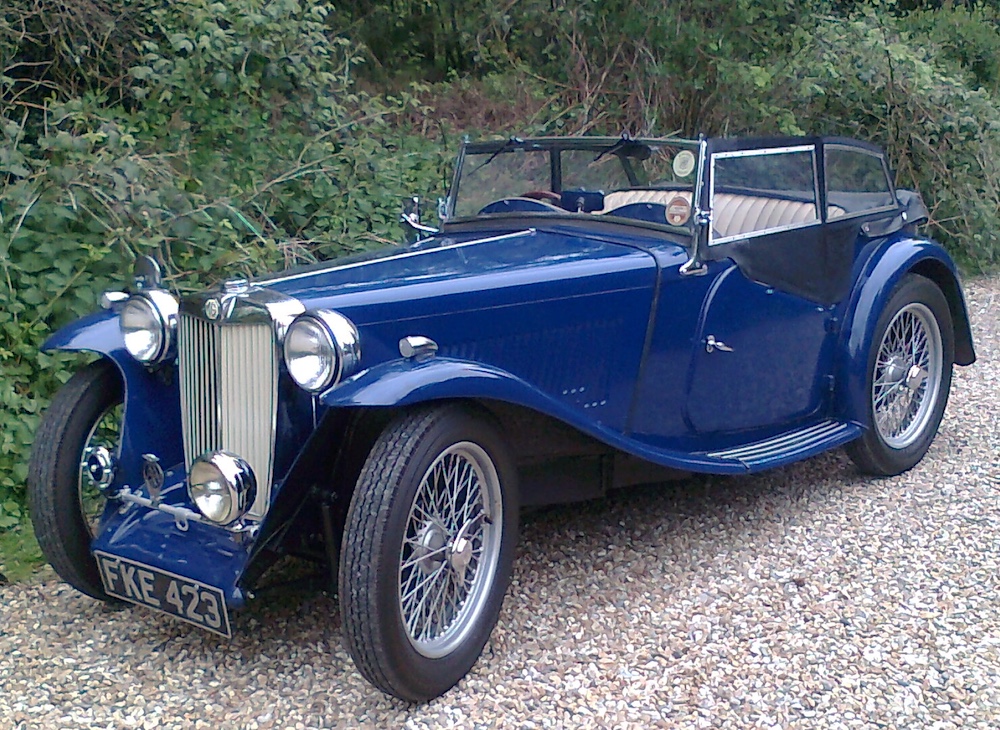Ask an MG owner how their petrol engine works and the answer you are likely to get is ‘suck, squeeze, bang and blow’. If only matters were that simple! Before presenting the next set of data from the Manchester tests, this article introduces some of the concepts affecting the combustion of fuel in a 4-stroke spark ignition engine. It describes the journey taken by a single cylinder in an XPAG engine running at 3000 rpm where it completes the four stages of the cycle in a mere 40 thousandth of a second (40ms). Think how fast 1 second is and imagine that 1ms was equivalent to 1 second. On that timescale, 1 hour would last 6 weeks! 1ms is so fast that even gases can act like solids.
Suck

Suck timeline
The start of our journey is where the piston is at top dead centre (TDC). At this point you might expect the exhaust valve to close and the inlet valve to suddenly open. Valves cannot open and close instantaneously and any delay as the inlet valve opens reduces engine power. Fortunately, MG engineers knew the valves could start to open earlier and close later than expected, increasing an engine’s power. At the start of our journey, the inlet valve will already have been opening for 0.6ms (11O before TDC) and it is another 1.3ms (24O after TDC) before the exhaust valve fully closes.
The 1.9ms when both valves are open is called valve overlap and is beneficial at higher RPM. At the top of the “blow” stroke the piston has expelled most of the exhaust gases and as the inlet valve starts to open, a “scavenge” effect takes place where the rush of gases into the exhaust port draws in some air petrol mixture through the inlet valve.
At TDC the cylinder is not empty. The 45.5cc volume of the combustion chamber (about 15% of the 312.5cc cylinder volume) still contains hot exhaust gases at approximately 1200oC left over from the previous cycle. As the piston starts to fall, the exhaust gases will continue to vent through the exhaust valve, and the remainder will cool as they expand. (If you ever studied Physics, you may remember Boyle’s Law. As a gas is expanded it cools, and when compressed it gets hotter). At some time between TDC and Bottom Dead Centre (BDC) when the pressure in the cylinder becomes lower than the inlet manifold pressure, the air petrol mixture will start to flow in earnest into the cylinder. Induction has begun.
The volume of mixture entering the cylinder is controlled by the throttle butterfly. This is a circular brass plate that pivots when the throttle is pressed, allowing more mixture to flow into the engine. As the throttle is opened, the suction piston in the carburettor responds, moving upwards as more air flows through the carburettor. Its height is a measure of the volume of air flowing into the engine and by withdrawing the tapered needle from the jet, it allows more fuel into the air stream.
In this way, the SU carburettor is able to accurately control the air / fuel ratio.

The ideal mixture for the inducted air/fuel is a stoichiometric ratio consisting of 14.7 times the mass of air to petrol. Unfortunately, carburettors are volumetric devices; they deliver measured volumes of petrol and air. The addition of ethanol, currently up to 5%, affects the ideal stoichiometric ratio. Ethanol contains oxygen, whereas petrol does not. With ethanol blended fuels you need more fuel and less air, i.e. a richer mixture. Fortunately, SU carburettors can be adjusted to accommodate for this effect. This will be covered in a later article.
Depending on throttle setting and engine revs, around 10% of the petrol will evaporate in the carburettor cooling it. In normal road use when the engine is probably running at part throttle, this will not be noticeable. However, for racers who want the maximum power output it reduces the volume of petrol entering the engine and hence maximum power. This cooling can also cause carburettor icing, probably more likely in engines with exposed carburettors such as motor bikes. Modern fuels have a greater range of light fractions to improve cold starting that are more likely to evaporate in the carburettor. In addition, ethanol requires twice the heat to evaporate as petrol. All this contributes to increasing the cooling effect. If you are suffering from carburettor icing, this will get worse as the percentage of ethanol increases. The solution would be to use a fuel with a lower percentage of front end components as described in the previous article.
The inducted air / petrol mixture consists of 20% oxygen (O2), 80% nitrogen (N2) and small quantities of other atmospheric gases, some of the petrol as vapour and the remaining as varying sizes of liquid droplets. At low revs or light throttle settings, petrol may be deposited on the inlet manifold walls, an effect called pooling, before it streams into the cylinder.
The first air petrol mixture entering the cylinder meets the residual hot exhaust gases. These heat the incoming mixture and cause some of the droplets of petrol to evaporate, cooling the residual gases in the process. Before the petrol can burn it must be a vapour. To achieve the ideal stoichiometric mixture all the liquid petrol entering the cylinder must boil before ignition and be mixed with the air. This boiling is unlike what you see in your kettle, where bubbles form in the bulk of the liquid. Inside the cylinder the petrol evaporates molecule by molecule from the surface of the droplets. The small droplets with a large surface area relative to their volume will evaporate the fastest. Even though the residual gases are extremely hot, they will not contain sufficient energy to evaporate all the inducted petrol.
Squeeze

Squeeze timeline
After reaching bottom dead centre (BDC), the piston starts to rise, however, Induction continues for another 3.2ms (57
O after BCD) until the inlet valve closes. During this time, the air petrol mixture entering the cylinder 90mm above the piston does not feel the effect of the piston’s upward motion and continues to flow into the cylinder. This increases the cylinder pressure about 0.2 to 0.5 lbs/inch
2 above that of the inlet manifold and is called the stagnation pressure. The compression stroke does not start in earnest until the inlet valve has closed and continues for another 6.8ms until the piston reaches TDC, after 20ms, or halfway into our journey.
During this compression stroke, the pressure and temperature of the mixture increases, providing heat to evaporate more liquid petrol.
Pockets of rich and weak mixture will form as the liquid petrol evaporates. Turbulence in the gasses will mix these with the air in the cylinder as the compression stroke progresses.
Like many modern designs, the combustion chamber in the cylinder head of the XPAG is boat shaped. As the piston approaches the top of the stroke, the gasses on the outside edge of the cylinder, where the cylinder head overlaps the bore, are “squished” into the combustion chamber, increasing turbulence and mixing.
At the end of the compression stroke, liquid petrol may still be present in the cylinder, trapped between the piston and cylinder wall, around the valves, or as large droplets of fuel that have not evaporated. This may be more common in low compression engines where there is less compressive heating. Even if the carburettor is delivering the correct mixture, the presence of liquid petrol at the end of the squeeze stroke will result in a weak mixture when the plug fires. This will have a significant impact on the growth of the flame front.
Bang

Bang timeline
Combustion is initiated by an electrical spark in the gap of the spark plug.
There are products on the market that increase the power of the spark and claim to also improve the engine’s power or efficiency. This was one effect that was investigated at Manchester by measuring engine’s full throttle power output as a function of spark energy at 2000, 2500 and 3000 rpm.
The graph shows that the energy in the spark has no effect on power output over the range of RPM investigated. This is hardly surprising when you consider the chemical energy released by the small volume of petrol ignited by the spark is over 1,000 times that of the electrical energy in the spark! As long as a spark is formed, no matter how weak, the combustion process will start.
The only benefit of systems to improve the spark energy is to reduce misfiring caused by dirt or defects in the high tension components of the ignition system. Unfortunately, even these high energy systems will fail to deliver a spark to the plug if the condition of the ignition system is very poor. It is important to ensure the distributor cap, rotor arm, coil, plug caps and plug leads are mechanically sound (no scratches or burns from arcing) and are clean and free from dirt and moisture. This will ensure even the standard ignition system will perform to the optimum.
The flash point of a flammable liquid is the lowest temperature at which there is sufficient vapour for an ignition source, such as the spark plug, to ignite the mixture; its auto-ignition temperature is the lowest temperature at which it will spontaneously ignite, burning without a source of ignition.
Auto-ignition is bad as it causes the pressure in the cylinder to rapidly increase, resulting in pinking or knocking. An ideal fuel has a low flash point and high auto-ignition temperature.
After the spark plug fires, there are three phases during the combustion cycle. Firstly, a fireball of burning mixture about the size of a pin head is created. This fireball grows as the flame front moves outward at approximately 35cm/sec depending on the pressure in the cylinder and air / fuel mixture around the spark plug. This initial phase of the combustion is slow and a significant factor in the time taken to burn the fuel. Furthermore, a weak or rich mixture around the plug will significantly slow the growth of this initial fireball, leading to a late cycle. Once the fireball has grown to approximately the size of a pea, the second phase begins when turbulence takes over and spreads these ignition points throughout the volume of the cylinder, rapidly igniting the remaining mixture.
When petrol burns in the presence of sufficient air, the hydrocarbon chains break down. The hydrogen (H) combines with the oxygen (O2) in the air to produce water (H2O) and the carbon (C) combines with the O2 to produce carbon dioxide (CO2), liberating a great deal of energy in the form of heat, 33 million joules for each litre of petrol. During the third stage, this heat both evaporates and burns any remaining liquid fuel and dramatically increases the pressure of the gases in the cylinder.
After ignition, the ideal situation is that the pressure in the cylinder will reach its maximum 17o after TDC (0.8ms after TDC), anything different and the engine will not produce as much power.
It takes a relatively long time from the spark that creates the initial fireball to all the mixture being burned. As revs increase it is necessary to advance
when the spark plug fires to provide sufficient time for all the fuel to burn before the optimum. On very early cars this was achieved manually, typically by a lever on the steering wheel. On later cars and the majority of MGs, this is done by bob weights in the distributor which fly out as engine revs increase, causing the ignition timing to advance.
The graph below compares the “centrifugal” advance curve for the XPAG from the Manchester tests (green) to the original curve from a rebuilt TC distributor (red). The original advance curve is around 5o too retarded below 4000rpm, supporting general observations that it is necessary to advance engines when using modern fuel. Unfortunately, the shape of the original curve is wrong. Increasing the standard advance to 5o static, improves the timing up to ~3000rpm, beyond which the engine is too advanced.

The growth of the initial fireball is also dependent on the pressure in the cylinder which, in turn, is related to throttle setting. At light throttle settings, cylinder pressure is low and the growth of the flame front slower. More advance in addition to the centrifugal advance is needed. On later cars, this is achieved using the vacuum pod on the distributor which is connected to the inlet manifold. A light throttle setting reduces the pressure in the inlet manifold, causing the pod to advance the ignition timing. Earlier cars do not have a vacuum advance.
At Manchester, vacuum gauges were connected to a plate fitted between the carburettor and inlet manifold. This allowed the vacuum advance to be measured during the part throttle tests, shown in the graph below. At light throttle settings, up to an additional 15 degrees advance must be added to the centrifugal advance to obtain the correct timing.

Once the ignition has fired, a race starts between the pressure waves caused by the flame front rushing across and down the cylinder and the piston moving upwards. At 30o advanced, the piston still has 8.5 mm to travel (9.3% of the stroke) before it reaches TDC. During this time, the building pressure is working against it. As pressure builds, so does the speed of the flame front, resulting in a rapidly increasing cylinder pressure.
Maintaining the correct advance is important. Running an engine too advanced will result in damage to the piston and big ends as the building pressure tries to force the piston back down the cylinder, reducing the power output. Running too retarded leads to an increase in exhaust temperature, burned exhaust valves and damage to the cylinder head. Both these effects were investigated at Manchester by measuring the full throttle power output as a function of advance.

What is interesting is the insensitivity of power output to ignition timing. At 3000rpm, advancing or retarding the ignition by as much as 10-15 degrees only changed the power output by ~5%. This suggests the combustion profile is very spread as is discussed below.
The change in exhaust temperature with ignition timing is more pronounced.

After ignition, minor variations in the turbulence, and particularly the mixture around the spark plug, can have a significant effect on the growth of the initial fireball lead to an effect called cyclic variability. If you were able to measure the crank angle when the maximum cylinder pressure was reached and count the number of cycles that occurred at that angle, you would get a frequency plot as shown in the example below. The orange curve corresponds to low cyclic variability and the blue and dotted blue curves to higher cyclic variability.

Unfortunately, measuring the timing at which the peak pressure occurs in a running engine requires specialist equipment, not available for the Manchester XPAG tests. The effects of cyclic variability, however, can be assessed by comparing measurements using different fuels, or in this case, different ignition advance settings to assess its impact. Future articles will describe how carburettor settings or different fuels can reduce cyclic variability.
The effect of cyclic variability is to broaden frequency curve, shown by the blue and dotted blue curves. As the magnitude of the cyclic variability increases, fewer cycles occur in the maximum power range, decreasing the engine’s power output. Additionally, there are a small number of cycles where peak pressure occurs before TDC, these cycles pink – an effect referred to as “micro pinking” by John Saunders when he investigated the effects of modern fuel. Cycles where the peak pressure occurs late in the cycle will have insufficient time to fully burn and will still be burning when the exhaust valve opens, increasing the exhaust temperature.
Advancing the timing moves the curve to the left, as shown by the dotted curve. Slightly increasing the number of cycles that will pink and significantly decreasing the number that are burning late in the cycle, reducing the exhaust temperature. When the timing of the peak pressure is spread by cyclic variability, ignition timing makes little difference to the number cycles in the maximum power band (shown in blue). Power output is very insensitive to advance.
The data clearly demonstrates these two effects, indicating cyclic variability is a significant factor during the Bang cycle of the XPAG engine.
Cyclic variability explains some of the myths surrounding modern fuel. The measurements show an average reduction in exhaust temperature of around 20oC for each 5 degrees advance. The standard advance curve for the XPAG is 5 degrees too retarded, which increases exhaust temperature by 20oC, explaining why some people think modern fuel “burns hotter” even though actual combustion temperatures are unchanged. Furthermore, the increased number of late burning cycles gives the impression that modern fuel burns more slowly, when it does not.
These findings highlight the importance of us using the correct advance curve for an engine, both to avoid micro-pinking, and keep the exhaust gasses as cool as possible. A suggestion would be for each of the registers to sponsor rolling road tests on “typical” cars to measure and share the centrifugal and vacuum advance curves.
Mechanical distributors deliver a timing accuracy of around +/- 2 degrees, increasing the width of the curve above. These should be checked for wear, sticking bob weights, and to ensure the vacuum advance is working properly. Electronic distributors are more accurate. Programmable ones allow the advance curves to be accurately set.
I have now fitted a programmable electronic distributor with a vacuum advance to my TC. This is programmed using the curves measured above. The net result is a significantly advanced ignition timing above the standard, particularly at low throttle settings and as predicted by the tests, my car runs noticeably cooler particularly in slow moving traffic.
Unfortunately, the power stroke ends all too quickly 7.1ms after TDC when the exhaust valve starts to open (52o before BDC) and the high pressure gases rush out of the cylinder in a process called “blowdown”. Blowdown utilises the remaining combustion pressure to “get the gas in the exhaust moving”. Without this effect, energy would be lost during the exhaust stroke as the piston would have to push the gases out of the cylinder.
The piston is powering the car forward for just 18% of the time of each cycle.
Blow

Blow timeline
If everything were perfect, a fully combusted mixture of gases consisting of water vapour, carbon dioxide and nitrogen rushes into the exhaust, expanding and cooling to around 500
oC. The piston reaches BDC, 2.9ms after the exhaust valve started to open and as it rises the remaining exhaust gas is pushed out of the cylinder.
Combustion is not perfect; petrol vapour requires oxygen to burn. The droplets of petrol that evaporate during the combustion cycle will initially exist as “vapour droplets”. Although the temperature is sufficiently high to cause these to burn, the absence of oxygen means they will not burn properly, appearing in the exhaust as unburned hydrocarbons or carbon monoxide. Turbulence will mix these pockets of partially burned fuel with oxygen, allowing them to fully burn as the gasses leave the cylinder and travel down the exhaust, further increasing exhaust temperature.
A gas analyser looking at the exhaust gases reveals a great deal about the combustion process. The un-burned hydrocarbons show how much petrol has been unable to burn in the cylinder or exhaust due to a lack of oxygen. This can arise either because of a rich mixture, or poor combustion as described above. Finally, NOX or Nitrous Oxide, (NO) is produced at high combustion temperatures when the nitrogen in the air oxidises. NOX is bad for three reasons. It takes energy from the burning hydrocarbons, further reducing the engine’s efficiency; it reduces the amount of oxygen available for the fuel to burn and it is an atmospheric pollutant that contributes to ‘acid rain’. The presence of NOX is usually an indication of high ignition temperatures caused by a weak mixture.
What about modern cars? While the valve and ignition timing will differ slightly from an XPAG, the journey described above is very similar with three major differences. Firstly, the fuel is injected as very small and evenly sized droplets, typically 50 micrometers diameter (about 1/5th the size of those produce by a carburettor). These not only mix with the air more effectively, caused in part by the careful design of the inlet manifold, they evaporate five times faster. Ultimately, this creates a more evenly distributed mixture of air and petrol vapour in the cylinder before the ignition fires. Secondly, compression ratios are higher than in classic cars, increasing the compressive heating. Finally, the timing of the spark is continuously adjusted to ensure that the mixture burns optimally, and it is typically far less advanced than for the XPAG. The race between the piston and flame front is shorter and no longer left to chance. These differences allow modern cars to run on fuels that have a wide range of different hydrocarbons.
After 40ms our journey ends, only to start over again. Each cylinder completes the cycle described above 25 times per second. Driving along in an MG TC at 3000 rpm (48 mph in top gear) this sequence repeats itself 6000 times in the four cylinders every minute. The wonders of suck, squeeze, bang and blow!
Paul Ireland
Paul says “More to come. Next one will be on carburation.” (Ed.)
Ed’s note: Talking of the sequence, which repeats itself 6000 times in the four cylinders every minute, Ron Ward has asked me to advertise the following:
“I have in build a 1350cc lightened and balanced Stage II unleaded, lip sealed, 8 inch clutch, fast road cam TD/TF engine.
Future build of same specification TC, TD and TF engines and ‘one off’ same specification sleeved to 1500cc, either TC, TD or TF.
Call Ron Ward 01422 823649”
(If you experience any difficulty in contacting Ron, please phone the Editor on 0117 986 4224 or e-mail him via the website contact form.)

















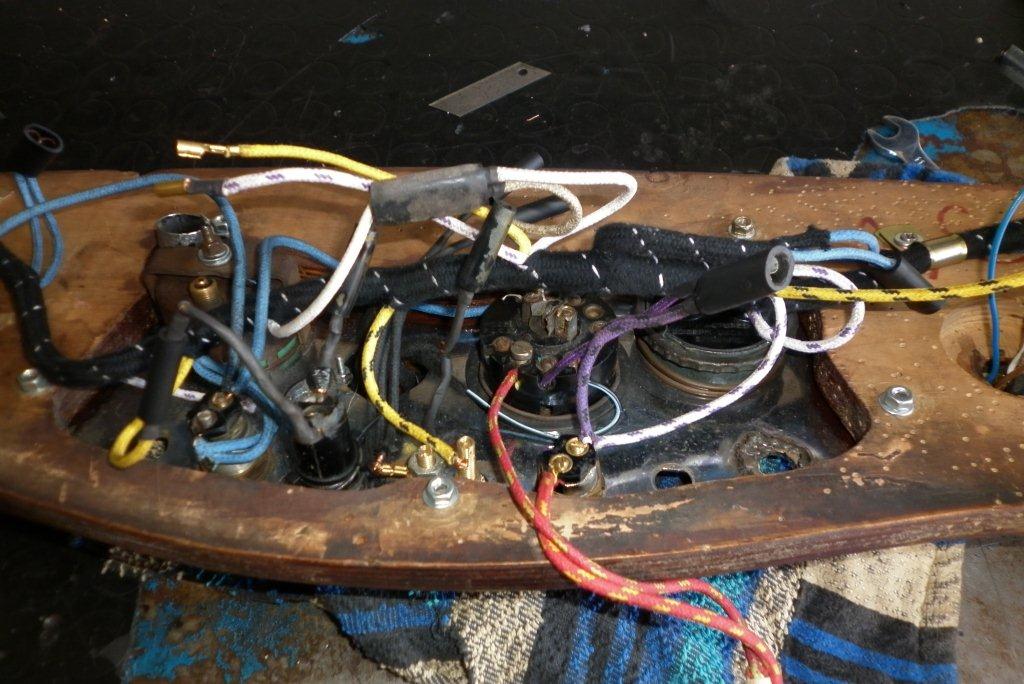


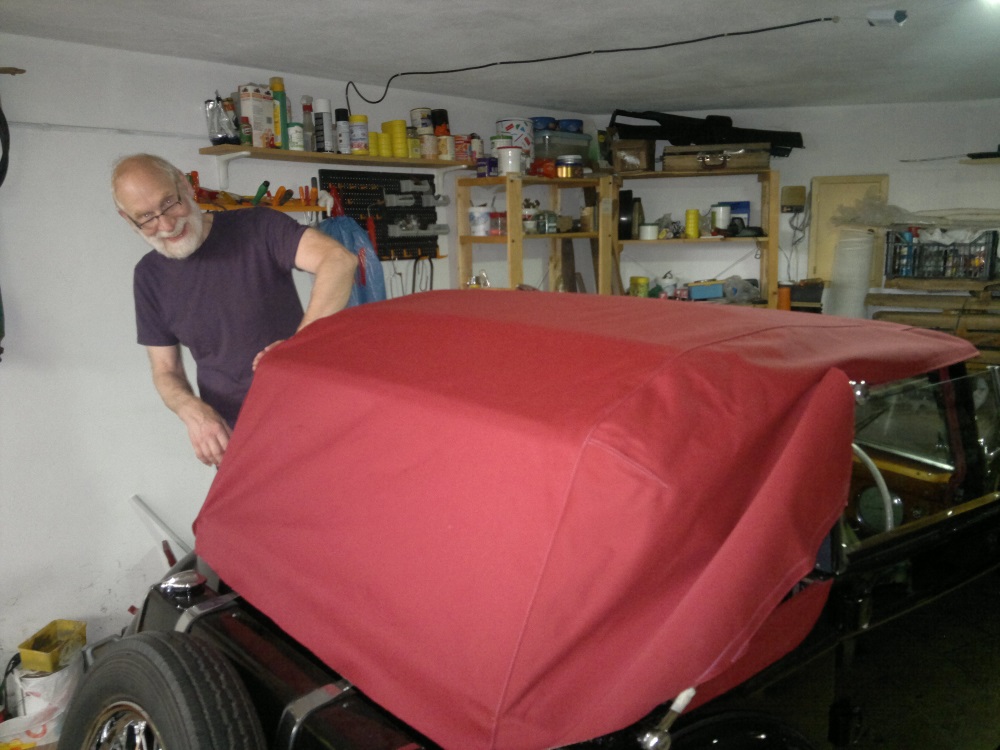










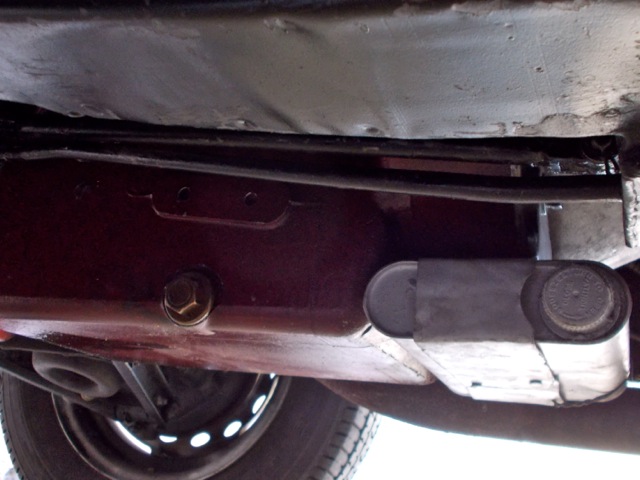




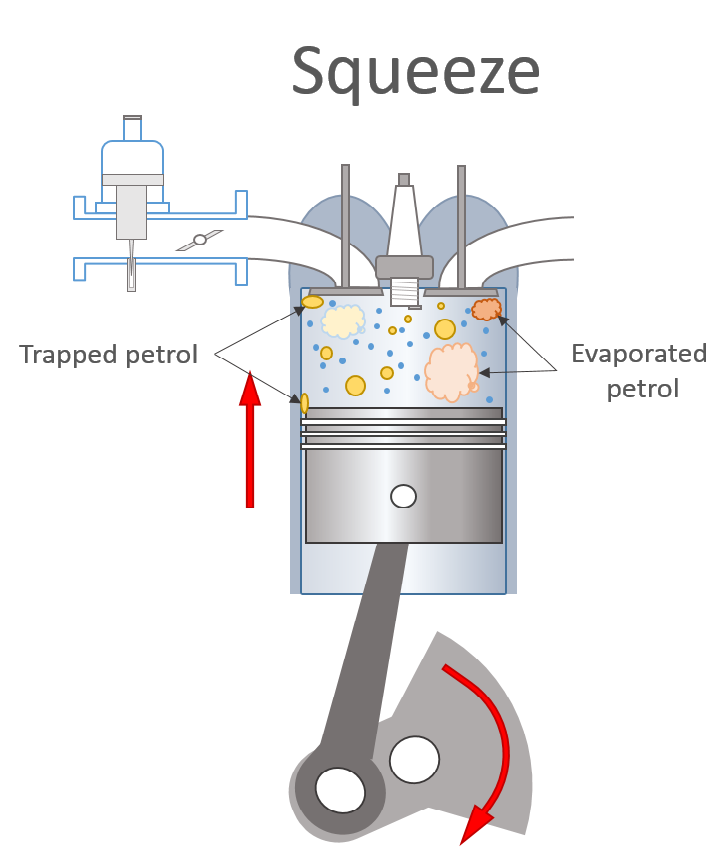















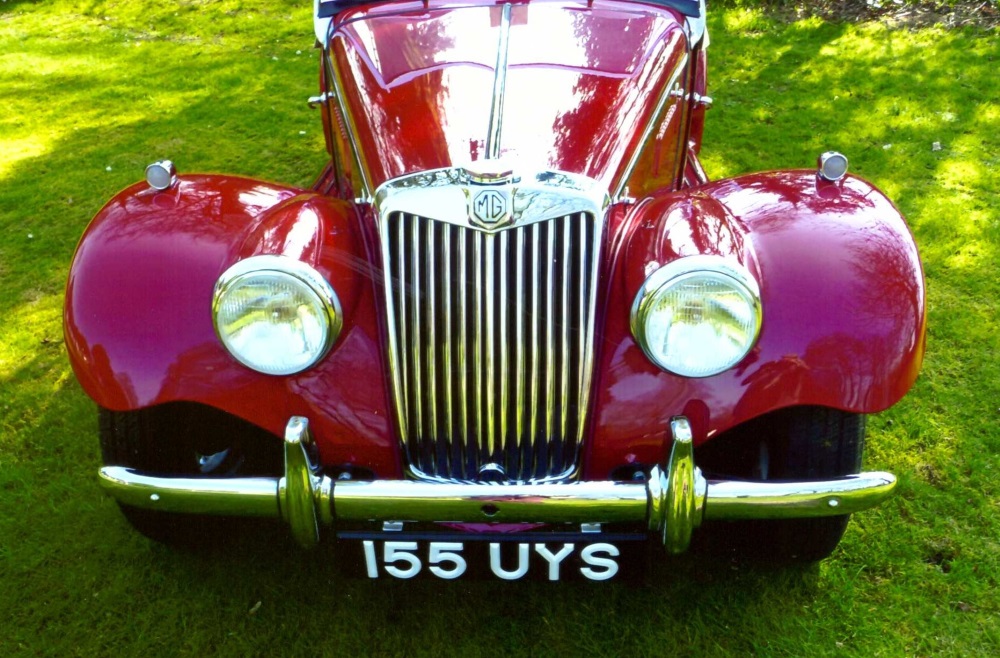








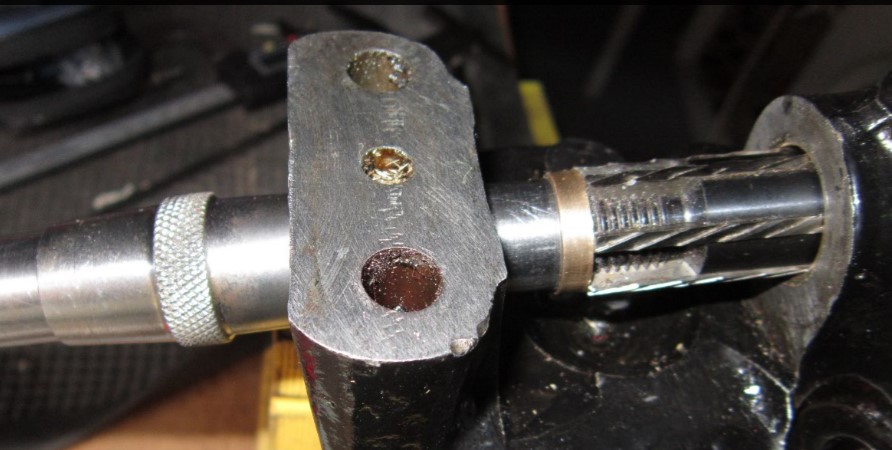









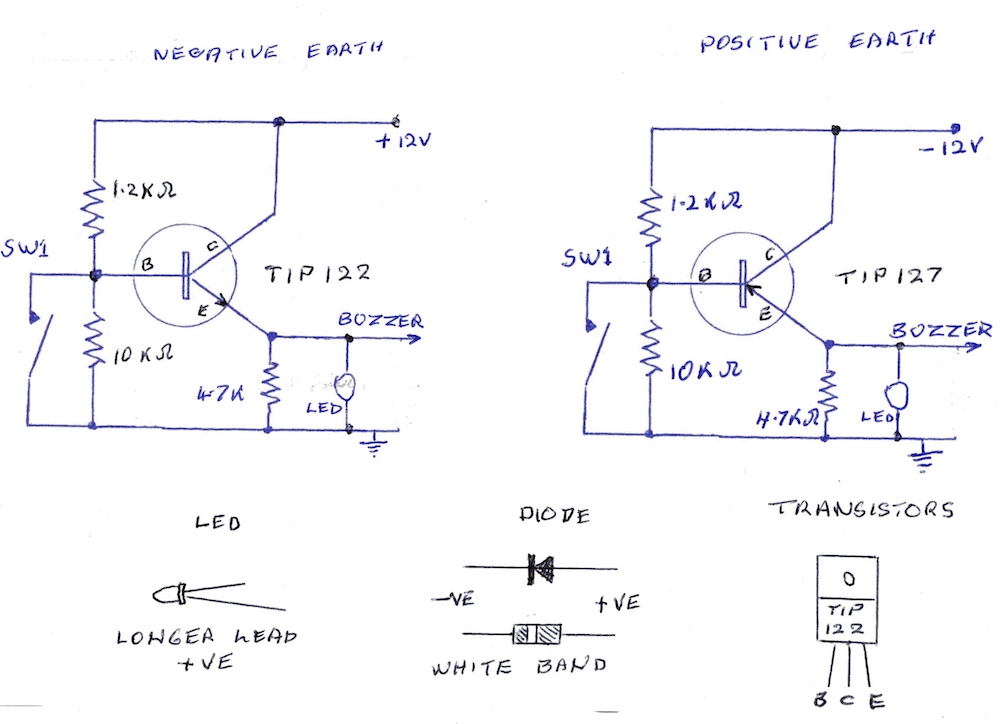



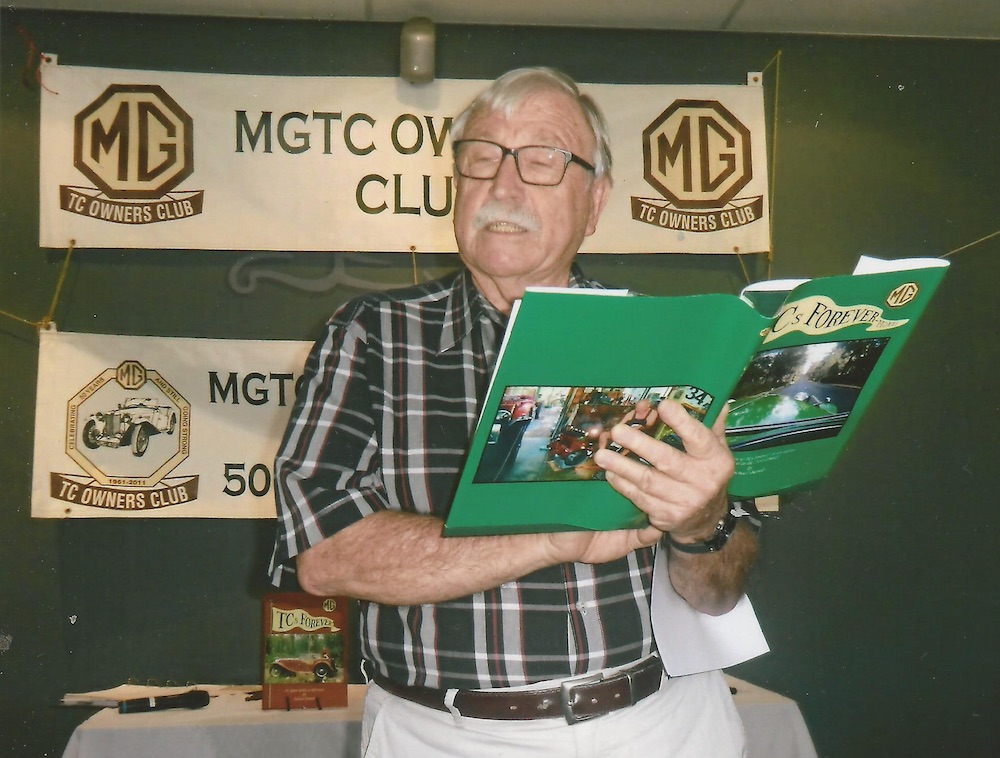


 Copies available from John James, 85 Bath Road, Keynsham, BRISTOL BS31 1SR. £60 plus £4 postage (UK) £14 (EU) £19 (ROW). Cheques payable to THE MG ‘T’ SOCIETY LIMITED, Bank Transfer to Acct no. 33458268 Sort code 77-73-11 or PayPal to paypal’at’ttypes.org
Copies available from John James, 85 Bath Road, Keynsham, BRISTOL BS31 1SR. £60 plus £4 postage (UK) £14 (EU) £19 (ROW). Cheques payable to THE MG ‘T’ SOCIETY LIMITED, Bank Transfer to Acct no. 33458268 Sort code 77-73-11 or PayPal to paypal’at’ttypes.org

